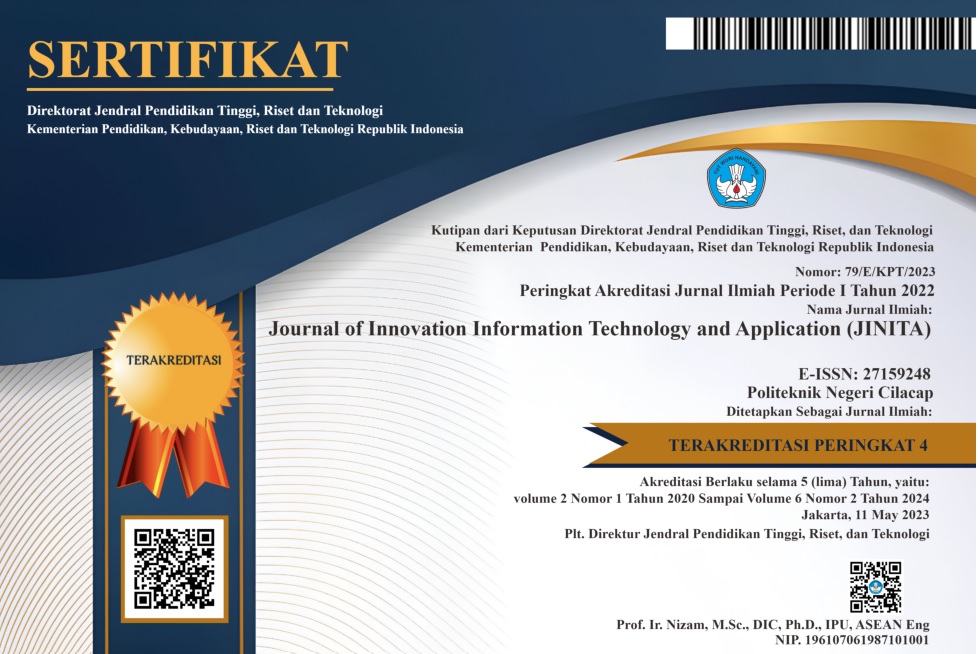Kombinasi Single Linkage Dengan K-Means Clustering Untuk Pengelompokan Wilayah Desa Kabupaten Pemalang
 Abstract views: 216
,
Abstract views: 216
,
 PDF (Bahasa Indonesia) downloads: 350
PDF (Bahasa Indonesia) downloads: 350
Abstract
K-Means is very dependent on determining the center cluster initial which has an impact on the quality of clusters resulting, in addition to determining the center of cluster the number of k that will be used it can also affect the quality of the cluster from the method K-Means. Poverty is mostly experienced by rural communities, this can be seen from the lack of existing facilities to serve the interests of the community in various fields. To avoid the imbalance that occurs, a development plan is needed in accordance with the characteristics of the welfare of the people in the region. Therefore, we need an effort to group villages so that policy making is right on target. One of the algorithms clustering that is commonly used is the K-Means algorithm because it is quite simple, easy to implement, and has the ability to group large data groups very quickly. However, the K-Means algorithm has a weakness in determining the center cluster initial given. Initialization of centers cluster randomly may result in formation clusters changing (inconsistent). For this reason, the K-Means method needs to be combined with the hierarchical method in determining the center cluster initial. This combination method is called Hierarchical K-Means which is a combination of methods hierarchical and partitioning, where the process is hierarchical used to find the initial center initialization cluster and the process partitioning to get the cluster optimal. The hierarchical method used in this study is the method single linkage. Based on the method Elbow , the recommended amount of k for this study is k = 4.The combination of the single linkage and k-means algorithms with k = 4 in this study results in avalue silhouette coefficient of 0.685 which is a feasible or appropriate cluster category, while the evaluation measurement by Davies The Boulldin Index yielded a value of 0.577.
Copyright (c) 2021 Journal of Innovation Information Technology and Application (JINITA)

This work is licensed under a Creative Commons Attribution 4.0 International License.
Authors who publish with this journal agree to the following terms:
- Authors retain copyright and grant the journal right of first publication with the work simultaneously licensed under a Creative Commons Attribution License that allows others to share the work with an acknowledgement of the work's authorship and initial publication in this journal.
- Authors are able to enter into separate, additional contractual arrangements for the non-exclusive distribution of the journal's published version of the work (e.g., post it to an institutional repository or publish it in a book), with an acknowledgement of its initial publication in this journal.
- Authors are permitted and encouraged to post their work online (e.g., in institutional repositories or on their website) prior to and during the submission process, as it can lead to productive exchanges, as well as earlier and greater citation of published work (See The Effect of Open Access).
















